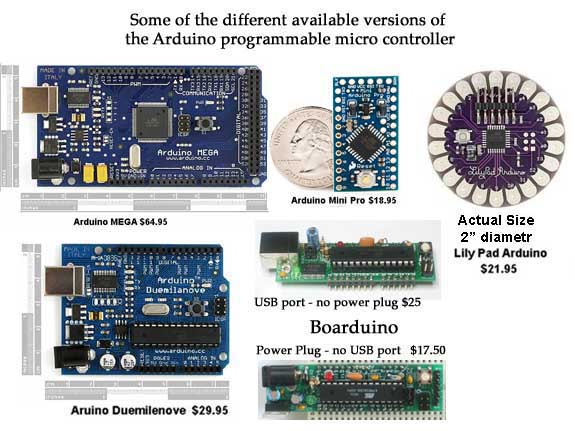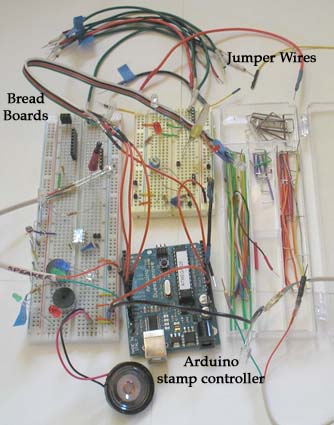Arduinos come in different sizes and shapes - but they all do the same thing - and one- the Mega - has more "pins" available to play with.

Add some jumper wires and a breadboard for plugging things into, a cable to connect your computer to the micro controller and you're ready to start playing. Actually your ALMOST ready to go. You also need the Arduino Development Environment software - which you can download off the internet - for free.

For the cable, you can go with either a normal USB cable or a special FTDI cable which is a USB to Serial (TTL level) converter. You can get an FTDI cable that works with Arduinos here ($17.95).
You can download the Arduino Development Environment software here (free)
The Mega and Duemilenove come fully assembled and ready to go. They come with sockets you can plug jumper wires or jumper cable pins into. Makes for quick prototype testing and requires no soldering. Having one for prototyping and one of the others for use in an actual application - that you solder your component wires to - works really well - and makes for a much cleaner and neater installation. Soldered wires don't pull out - like pins can from sockets.
The two versions of the Boarduino come as kits. You have to solder the provided parts to the printed circuit board. That means you need a soldering iron, solder and a PC Vise to hold the board while you solder parts to it. Both can be plugged into a breadboard for testing and once you breadboard prototype works, you can solder wires to it.
The Pro Mini is the smallest Arduino - perfect for hiding in a piece. You have to solder your componets' wires to it - and so they can't disconnect while stuffing it and wires into a piece. THAT is a Good Thing.
The Lily Pad has some unique advantages over the other Arduinos. You can use jumper wires with alligator clips to do you protoype testing and then solder your application wires to it for a more permanent set of connections. At 2" in diameter, it can be fit in the bottom of a piece - or hidden inside a lid. It can also be sewn into clothing - and is handwashable. Weird huh?